The participants have worked so incredibly hard to create insightful and beautiful projects.

With impressive tenacity and efficiency in a short amount of time, participants have developed profound bodies of research into the critical issues that concern them — surveying their neighbors, leading workshops with children, interviewing students on a university campus, and talking to other artists about collaborative projects. In the process, we are also developing new friendships and relationships across art, technology, and culture.

They planned and produced, explored and innovated, played and discovered. The projects are not yet complete. I hope that they will never be complete — they are so many potential paths to pursue! Some aspects of the projects will be furthered over the coming months, some tangents may be followed through the end of this year, others....we have yet to see!

Some of these project futures were imagined during the course of the panel review, which was inspiring and exciting! We were honored by the presence of Jennifer Rasamimanana, the Consul General of the United States in Casablanca; Maria Daif, Director of L'Uzine; Kenza Amrouk, independent curator; Mohammed Fariji, L'Atelier de l'Observatoir; and Kristi Jones, consultant and curator. Each member of the panel represented different aspects of the program goals and I am so proud that their observations included positive and constructive comments on the structures of the presentations, the level of craft, and insight into societal questions of the projects.

After completing and presenting their initial research and another ideation session, participants formed project groups — some related to the previous research, some new.
The groups are collecting, creating, designing, iterating, revamping, and installing their projects with excitement and enthusiasm. I am continuously impressed with how brave they are in choosing strategies for engaging people in public spaces, representing their ideas, speaking candidly about their concerns, and embarking on learning new technologies in the process!
Our space at L'Uzine has become an epicenter of exploration as each group returns and shares new cultural and technological discoveries.

After a survey introduction to new media techniques, individual participants have chosen different technologies to focus on as they develop group projects. With the help of FabLab Casablanca, they are using media such as laser cutting and Arduino sensor kits to build dynamic exhibits and online maps to include complex and thorough sets of information.
Le Littoral | Amine, Loubna, Taha


To Art or Not to Art | Jalila

ReZero4izer le Zero4 | Youssef and Yasser


I am so thrilled to work with this incredible cohort: a group of philosophers and artists with a wide range of artistic and technical talents with passions that include history and memory, environmental causes and science, as well as social justice and art. There is no way I could have ever predicted how amazing the participants in this program would be. I am blown away daily by their commitment, inquisitiveness, and nuanced approaches to the profound questions that move them. Through them, I am seeing Casablanca.
---
The departure point of our studies is the idea that sensory and spatial mapping are interpretations and projections.
A space represented by a void is not necessarily empty.
A space replete with information is not necessarily accurate.
Information can be left out.
Information can be filled in.
Working definitions:
DATA: quantifiable information
MAP: data interpreted through space
EMPOWERMENT: knowing how generate to data to create maps that represent one’s own opinions, convictions, or knowledge.
Vast quantities of data are generated each second as we function in our digital environments. Patterns are found in this data and mapped according to preset priorities. In Rhetorical City, we look into what happens when we define the data we generate and choose the priorities by which data is analyzed.

In conversation with our tools, we choose how to deconstruct and reconstruct information, including information and images of ourselves. Using bristol paper and vinyl cutting machines, participants created layered, three-dimensional portraits of themselves. In converting their pixel-based portraits into vectors, the participants chose the level of resolution of their portraits. In a more abstract version of the exercise, Abdelilah selected very large-scale pixels of an image based on parts he liked or didn't like rather than based on color or tone. The product is a mask for the image that reveals or conceals personal preference.
To put these tools and processes into context, we looked at a survey of digital fabrication technologies and visited FabLab Casablanca to see some of them in action!

We discussed the reciprocal cycles of interpretation between ourselves and our tools — be they hand or digital drawing, an X-Acto knife, a vinyl cutter, a laser cutter, or a CNC router.
As pattern-finders and interpreters, how do individuals perceive, translate, and analyze?

To engage our bodies in the construction and relation of meaning, we started the program with a game of synesthetic exquisite corpse: by sharing sensory experiences collected throughout L'Uzine with one another, the participants created interpretive sequences, which then led to conversations about how we structure meaning and information through the creation and comparison of categories.

How do we create categories? How do we structure knowledge? How do we recognize the subjective in the process of categorization and how do we allow this recognition to liberate us from the pre-judgements and perceptions we have inherited? How do we display and validate our interpretations in relation to other interpretive systems that exist?
How do these corporeal experiences, memories, and categories impact our reading of our urban spaces?

Through quick mapping exercises, participants then connected their physical (sensory) categories and memories to their cities.
Otherwise invisible moments of experience, communication, and translation thus became conceptual trajectories through the city.
How can the connection and interpretation of corporeal and urban spaces help us understand, articulate, and propose action for critical social questions?

Research groups formed in the first week based on a quick ideation exercise. Using GoPros, audio recorders, and cell phones, the groups started to articulate societal questions of physical and economic access in public space.
Questions of accessibility, diversity, gender, environment, and economy were among those discussed and explored. In the process, different forms of transit to explore the life of spaces such as an unfinished highway, the bus, a skatepark, and major intersections.

After this initial research, groups formed based on ideation exercises exploring interests, identifying questions, and expanding skill sets. The social challenges that participants have taken on are large and complex, the products and processes proposed are eloquent and elegant; working with them to develop these is not only fascinating, but also fun!

American Arts Incubator is an initiative of the U.S. Department of State's Bureau of Educational and Cultural Affairs and is administered by ZERO1. The incubator in Morocco is produced in collaboration with U.S. Consulate General in Casablanca and L'Uzine.
I can’t believe how quickly time has flown so far this month! IZOLYATSIA and the IZONE Creative Community have been incredible spaces to conduct workshops in and to connect with the arts community here in Kyiv. Before the workshops began, we received an overwhelming amount of applicants to the program. After choosing 34 artists, it has still been a very large group to work with, but full of wonderful and talented humans! The artists in the workshop make up a very diverse group of Ukrainian artists, coming from different places within the country and with varying levels of experience and background in the arts.
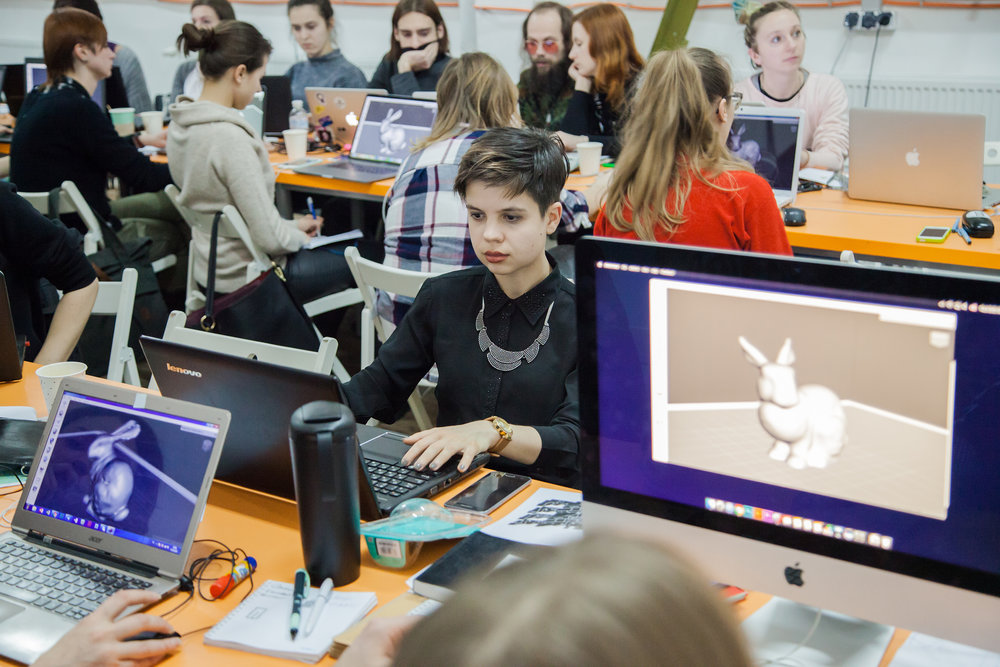
It’s been an incredible delight to work with all of the artists, and to have them so engaged in learning new digital skills and envisioning new projects of their own. I’ve been so impressed by their original ideas and concepts — taking the skills I presented in my speculative design workshops and applying them to cultural and ecological issues in Kyiv and Ukraine. I was told that speculative design is not a common practice or taught very often here, and people are having a lot of fun thinking outside of practical design boundaries to reimagine future cultural spaces and technologies along the Dnipro River and elsewhere in Ukraine.
It’s been enlightening to hear about what is important to participants from their cultural context — there are some universal issues, as well as some topics that would not be considered as much by Americans due to our different backgrounds, geographies, and histories.
.jpg)
Each artist in my workshop has had a different vision and speculative design for how they would like to see the future of Ukraine and shared their vision during a critique on the penultimate day of our workshop series. Some artists were really drawn to each others' visions and decided to work together in groups, applying their skills to different parts of a bigger collaborative project. Others were drawn to common themes and have created a new project from these themes. There were some artists that had a lot of difficulty working in large collaborative groups, as this is not a common practice in Ukraine. Most participants are artists who are used to working alone.
Fortunately, after overcoming some obstacles, all the groups were in place and starting to create some incredible works. We had a group excursion to visit Fabricator, one of the biggest fabrication labs in Kyiv, and artists are using this facility to do laser cutting, CNC milling, and 3D printing in addition to IZOLab, the smaller fab lab connected to IZONE.

I’ve been so full of warmth and inspiration working with all of the participants during this time, and am so excited to see all of the works these artists will produce over the next week.
I have thought a lot about what I would have done differently now that I have completed the exchange in Kochi, juggling tight deadlines within a demanding program. My first thought was that I should have chosen an easy personal project — something that I was completely familiar with and could turn out for an expecting crowd. The problem with this is that I have been an artist too long to not challenge myself. The point is the process, right? To grow and try to make sense of it all, and be successful in a way that feels like a true accomplishment. It is what I was asking workshop participants to do — to leave the comfort of aesthetically pleasing art behind to address an uncomfortable topic like gender equality and wrestle with it, focusing on exploring this challenge over the desire to make something impressive, finished, or entertaining without concept. If I was asking this of them, then I needed to set the example myself.
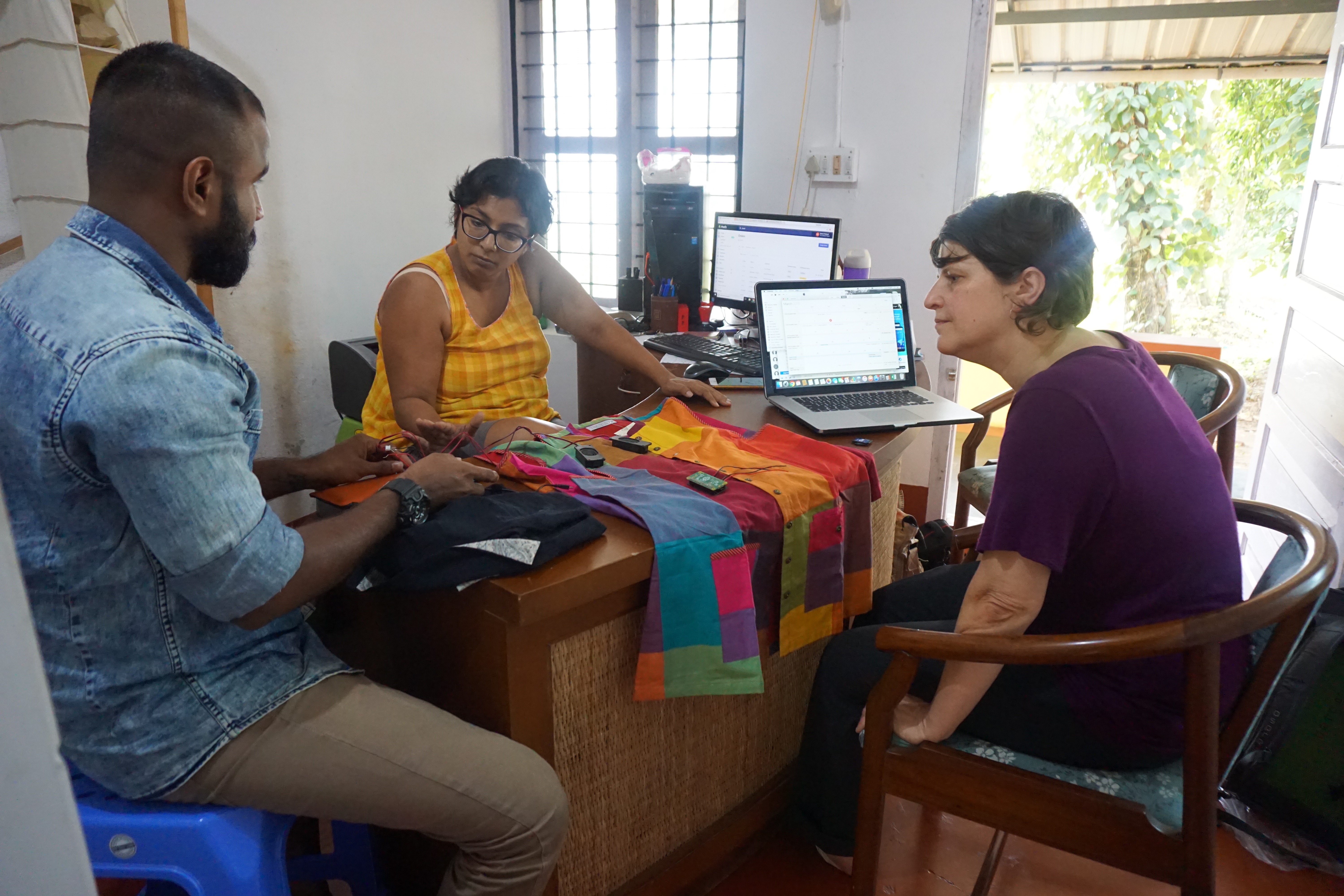
The success of my project was in supporting a locally-owned, female-run textile business during this exchange, and accomplishing a project, initially intended to use pirate radio broadcast methods, in a way that was respectful of Indian law. I also thoroughly enjoyed talking to five generous womxn who were willing to have their stories of struggle and success recorded for this project. It is content that I hope to build upon as I figure out how this idea will evolve.
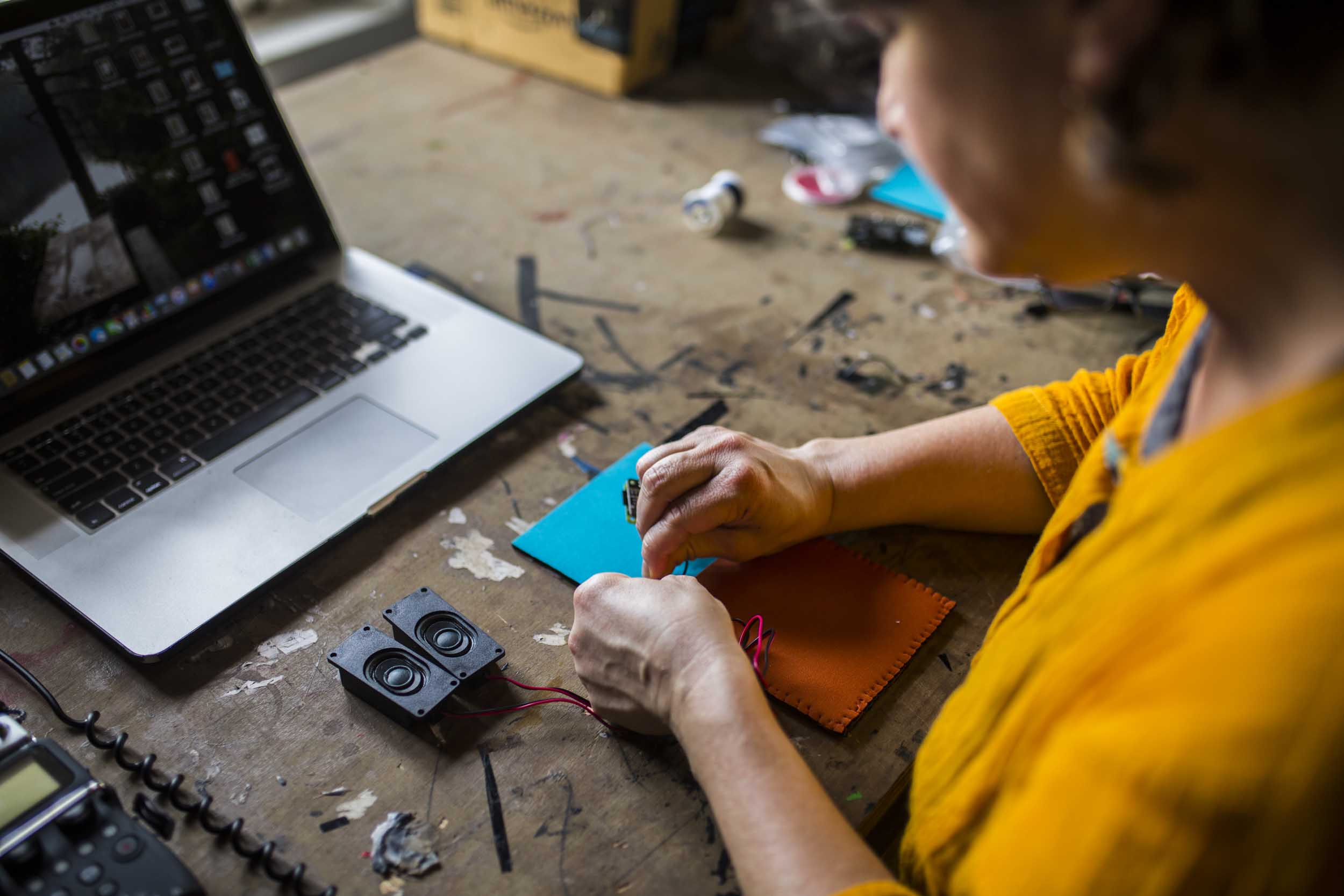
When I think about choosing an easier project, or trying to be less ambitious with the Amplified Voice Workshops, or even being assigned a topic that was less challenging than addressing gender equality, I keep hearing a popular Malayalam saying that is told as a warning to girls: “Whether a thorn falls on a leaf, or a leaf on a thorn, it is the leaf that will suffer.” This saying reminds me of the necessity for all womxn to experience life, freedom, and respect in spite of the obstacles in our global patriarchal society, and I can’t help but to hope that instead of suffering, we can begin to see the leaf as transformed into something new, which will soon ignite a fire.
Pepper House is one of the locations my partner organization, The Kochi Muziris Biennial Foundation, uses for exhibitions, artist talks, and residencies. It's also the home of their art library. I have been spending many days running workshops and ironing out the details of my own project in this beautiful, historic space.
As a creative and progressive organization providing space for local and international viewpoints, I have been fortunate to have deep conversations about gender rights, learn about the methods transgender people navigate this community, and on one special occasion, unsuspectingly walk in on a band practice session of the reunion of a well-known local group who was playing in one of the many places the biennial has developed as artistic space. I have also been told that more Kochi community members attend the biennial each year, and that their tolerance for, and interest in, more challenging forms of art is growing.
Due to the nature of this foundation, “The People’s Biennale,” I have also been surrounded by a 20- to 30-year-old crowd who either work for or are involved in the biennial. As an artist-educator-dreamer, I have aspirations for creating spaces where conceptual and cutting-edge art is accessible to the community and art provides access for people to be empowered, rather than an opportunity or event focused on only one demographic. The Kochi Muziris Biennial has achieved this. I have met more than one young person here who has said they had no interest in art until the biennial changed their viewpoint, and that they are now pursuing careers in art that will take them further than they ever expected.
Association with the program also provides a kind of freedom that allows young people to operate outside some of the cultural expectations in the area. Just as I am able to walk on the streets after dark or wear clothing that shows more skin as a tourist (without someone attempting to admonish me for not acting acceptably), the young people associated with the Bienniale, especially women, are granted more leeway to navigate outside of acceptable cultural norms.
These access points will hold even more resonance in 2018 as the next biennial develops under the curatorial actions of Anita Dube. The word here is that women and transgender artists will hold a prominent place in this next exhibition, an important and progressive move for Kochi, which I can only hope will inspire curators back home.
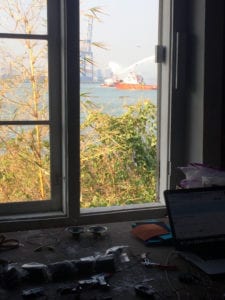
The view out of my studio window looks a little bit like home. Kochi is an extremely cosmopolitan city with a 97% literacy rate. In many ways, it reminds me of my home, Seattle, which also has an extremely high literacy rate for the U.S., and is a shipping port with large dockside gantry crane, a history of leftist politics, and an affinity for plaid (here it is called Madras checks).
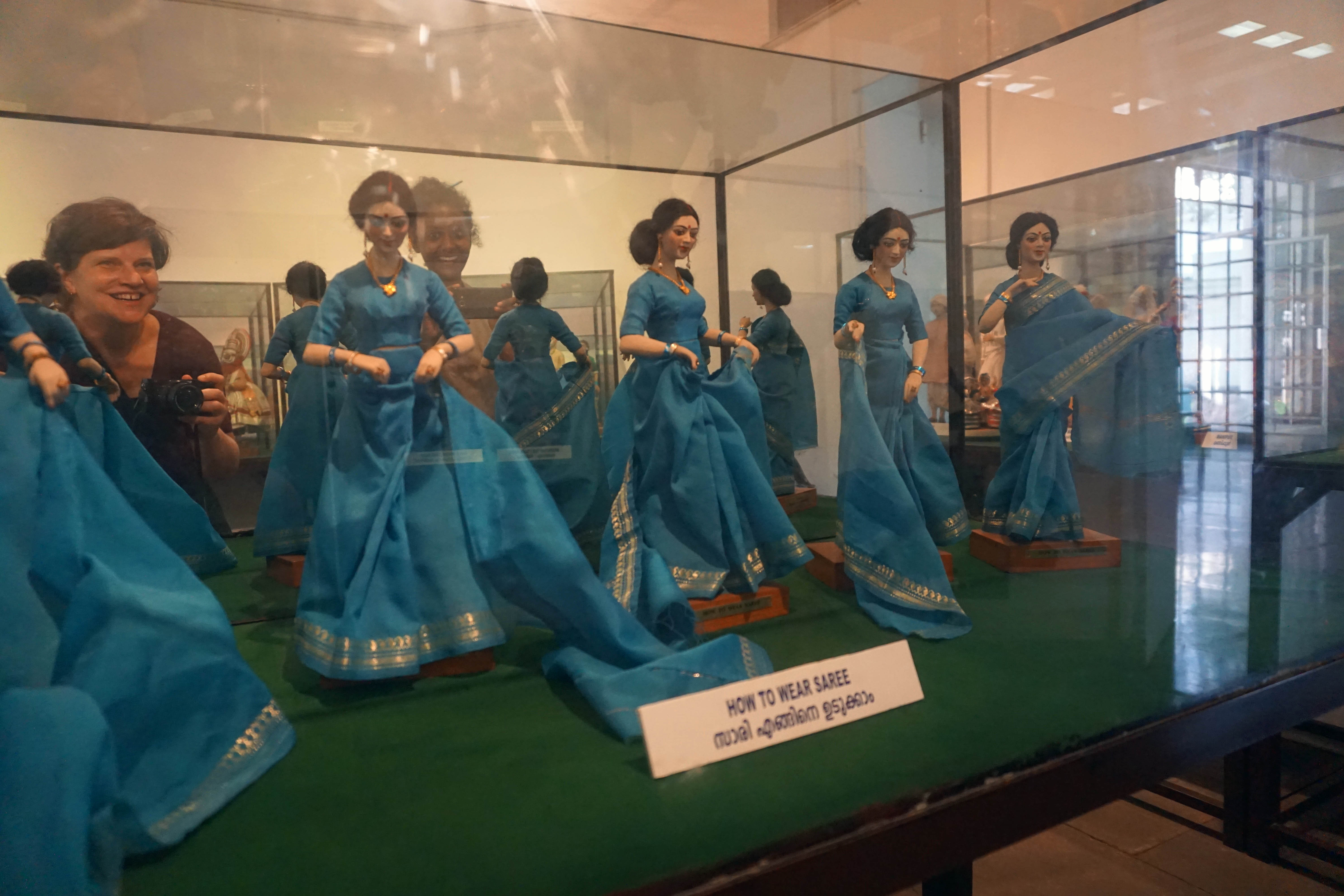
Selfies at the Kerala History Museum with my amazing assistant, Aparna, whose interest in contemporary art was spurred by the biennial.
The process of making art is like the process of exploring yourself. For me, it is one and the same. Making art is a process of exploring myself and the world around me, making sense of it in a way that is beyond the thinking mind… from a place of all of these stirred influences that made me into who I am… the stirred area of the collective unconscious too… when I’m creating my art, it's not just for me, and it's not just from me, it's from a place that I can only articulate through creating art, and a way for me to share this internal experience that is indescribable in any other way than through the language of art – to share it with others.
In the art-making process the past, present and future are all one, and all come through strong in my work. The work is really about presence though... in order to assimilate all of those forces into one it is about being present and letting them come though… it is not about the thinking mind and especially not about a to-do list.
The process of making art is like the process of exploring yourself: witness how past, present, future manifest into the material world. It’s about listening to ourselves, to our intuition, to nature, to the world around us, and to each other. It’s about just being... listening and observing… and balancing that with the creating and the doing.
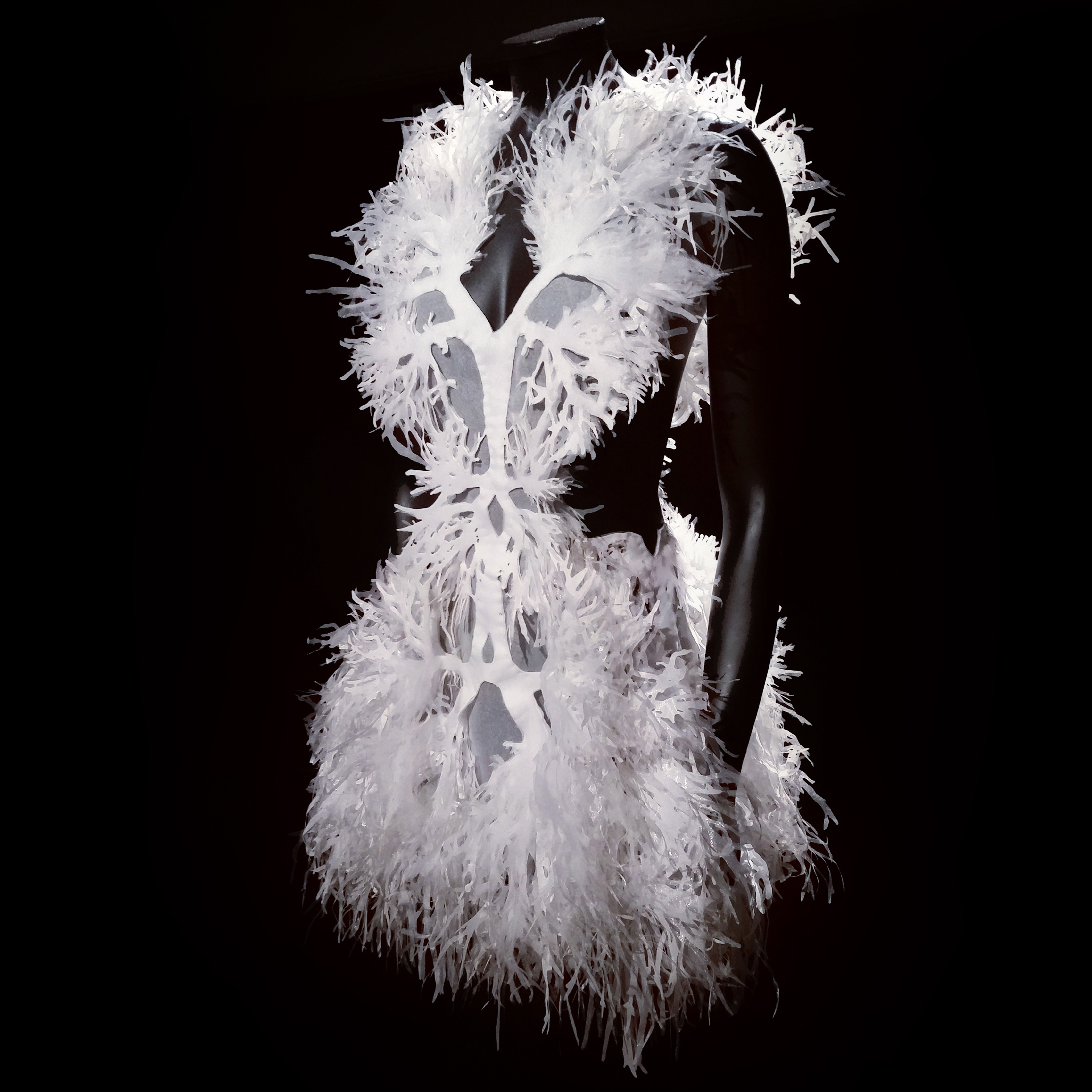
Exchange: Connecting With Ourselves and Each Other
As an American Arts Incubator exchange artist to Poland, I bring my practice of body-based investigation and technological experimentation to explore what it means to be human. I use technology in my process as a mirror to the self and as a mirror to who we can become. My artwork can be seen as artifacts of a speculative future because I’m thinking about how to heal and enhance the body/mind/spirit and using technology and workflows to help us get there. It’s of vital importance that I explore this in a way that can be empowering and for our best and highest good, especially when using exponential technologies that have the potential to perpetuate evolution faster than natural means, and irreversibly.
As an artist I am a provocateur,
it is my own questions being reflected into my work.
As an exchange artist to Poland, I will share my personal stories and experiences, personally, and professionally. I’ll share what goes into my work and how I make my work, including methodologies of how I explore personal and universal stories of what it means to be human as the basis for creating meaningful and cutting-edge work in STEAM (Science, Technology, Engineering, Art, Math). I’ll share how I collaborate, how I get people excited about my work and working together, how I work across and with other disciplines, and how to develop proposals, document, speak about and share work. I will offer a workshop and guide group projects to build skills and connections through investigations of past, present, and future. Personal stories will be the basis for participants to create projects that acknowledge and/or enable them to break through barriers ingrained in cultural norms. I look forward to working alongside my Polish counterparts participating in the workshop.
Most of all I’ll be listening. Listening to the people, listening to the participants and listening to the area. It’s not just about what we can communicate verbally. There are life events, experiences and stories that we carry within ourselves, and show up in our identity, choices in life, health and well-being. Many of our experiences and emotions live in our body, and are not of the realm of language or thought. There are ways to access, study, communicate and understand these experiences we hold in our body and live through. Awareness, dialogue, experimentation and art making are some of those means.
I intend to make space for participants and I to create experiments that set us up to learn something about ourselves, or see ourselves in a new way and use STEAM in the process. I plan to focus on self-empowerment through opening the space and imparting tools for awareness, dialogue, experimenting, inventing, prototyping, creating and presenting STEAM related projects that function as a catalyst for self-awareness, individual expression and thus self-empowerment.
I hope to impart ways to get in touch with one's self (mind, body, emotions) and share it with others, excitement to experiment and prototype ideas, and I hope to provide insight and open minds into a way of thinking about exponential technologies and what it means to be human.
***********************************************************************
Art, Science, Technology and What it Means to Be Human
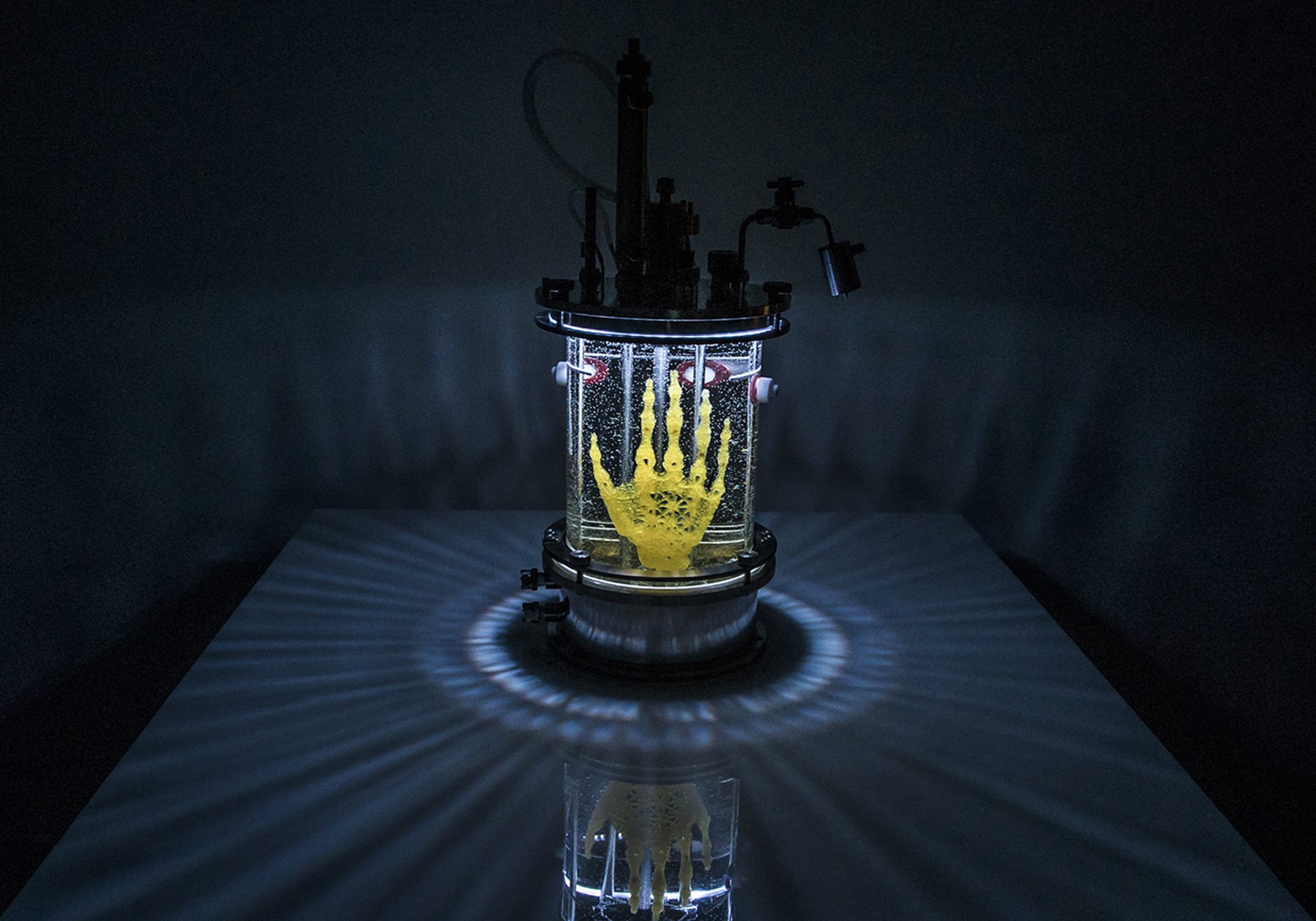
, 3D printed scaffolds for stem cell culture into bone is an example of integrating past, present and future as well as the human condition, emotional states, the body, mystic agency and scientific, medical and technological rigor all in one piece. “Regenerative Reliquary” embraces the mystery of life, religion/spirituality and life/death in a singular piece while making advancements in science, medicine and technology. It is not so much to speak to a single facet but to be a unified holistic model, communicating fundamental questions of what it means to be human and combining disciplines to open minds to future visions of who we are, and who we could become.
********************************************************************
Why Poland?
I was distinctly drawn to Poland because of the Polish people, their strength of character and unyielding spirit, as well as a softness and love that many carry inside. I feel there was something that I carry with me in my upbringing and my view of the world that I can relate to in Polish society, connect with and offer.
I grew up Catholic by heritage in an Italian American family in Endicott, NY, a small town largely comprised of European immigrants, including a large Polish population who came to the area because of the progressive policies of Endicott-Johnson Shoe Corporation. Women and immigrants were welcome to work there, and the company-sponsored library even had a section of books in Polish. My Grandmother and her friends were factory workers. Growing up, I visited many of my Grandmother’s Polish friends and heard stories of the “old country," witnessing their emotions and emotional style as they spoke. My extended family is Polish and I have a strong interest in learning about how contemporary Polish people relate to themselves and others, where they’re from, their view of the future and notion of present.
***********************************************************************
Self-empowerment.
Since accepting this role of American Incubator artist to Poland with a focus on empowering women in STEAM, this assignment has had me questioning my own empowerment, when I feel empowered or disempowered... and what to do (or not do) about it. Sometimes it is about external constraints but often it is more about our internal constraints.
Much of self-empowerment is how we feel. It’s a balancing act between internal empowerment and related action (or inaction). A big part of it is centering in how we do feel, accepting that – without trying to run away – and then also considering the best case scenario of how we want to feel, the best case scenario of who we want to become – even if only in a specific situation. Sometimes that requires outward action, but often the first action starts within ourselves.
How do we access what is on the inside and present it in ways that will be received? Present it in ways that are true to ourselves and empower us – regardless of the outcome?
This non-attachment to the outcome was a foreign concept to me, and required practice – but has empowered me – this notion to do our best in a way we feel good about regardless of the outcome… and then balancing that with focusing on a desired outcome and evaluating what the outcome is. It hasn’t always been an easy practice but it has helped.
Planning this project and working with various parties has made me acutely aware of when I feel empowered and disempowered. No one can tell you how to feel or if your feelings are wrong or right – they are your feelings. However, others can hold a mirror up for you to see yourself. Do you want to look?
To speak to the heart and the mind, we have come from the heart and mind.
We can’t let success go to the head, and not let failure go to the heart.
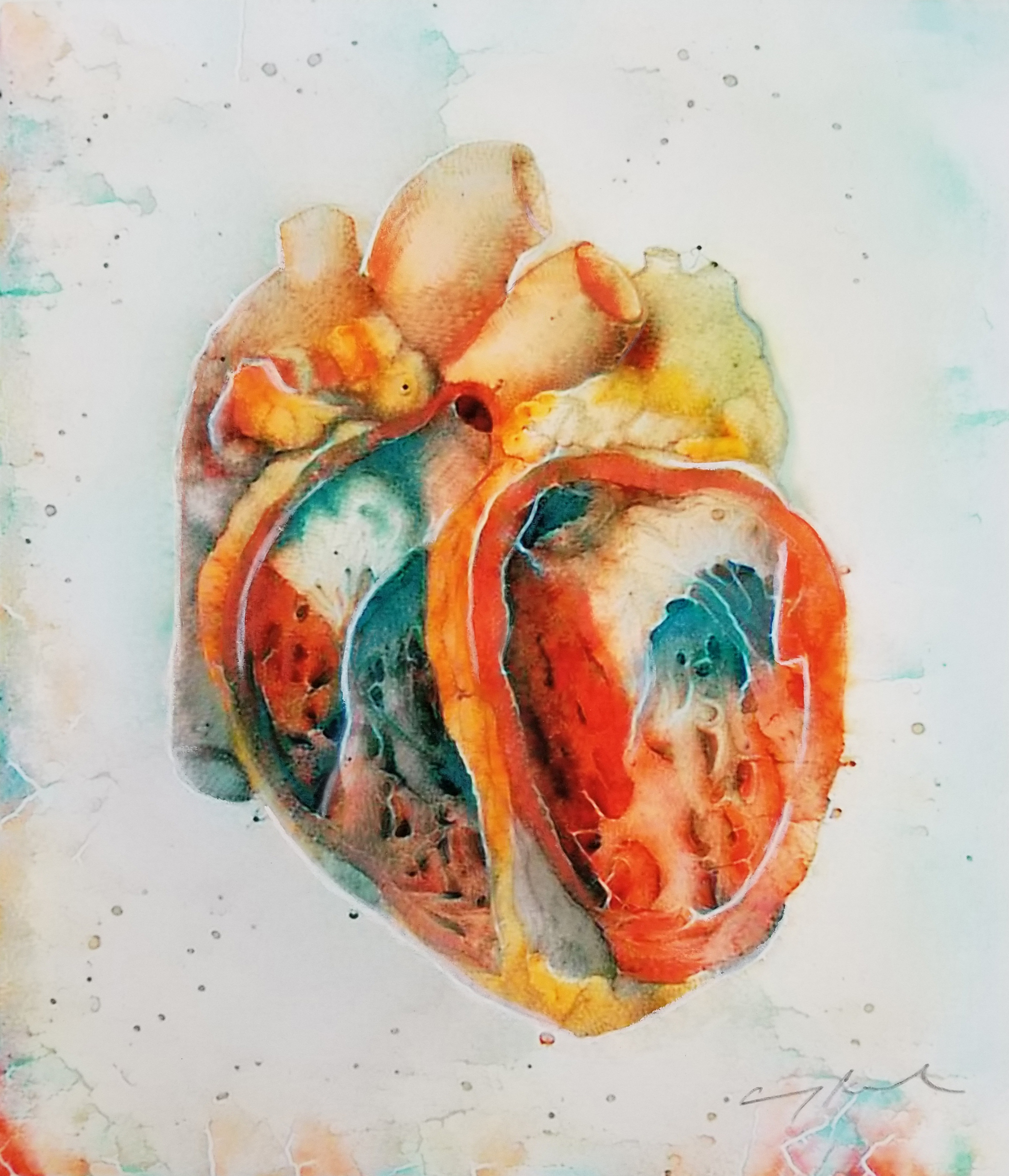
All images © 2016, 2017, 2018 Amy Karle
"The long poem of walking manipulates spatial organizations… it is neither foreign to them… nor in conformity with them."
—Michel de Certeau, The Practice of Everyday Life
I am so humbled by this opportunity to simultaneously teach and learn in Casablanca this March. And I am so excited and fascinated by the process of investigating how to explore questions of interest and concern to participants from a wide range of backgrounds.
It’s exhilarating to feel how aligned my host organization, L’Uzine, is with the goals and strategy for the exchange. After checking in this Saturday morning with Zineb at L’Uzine, it was clear that we are on the same page: working to develop an exchange that emphasizes interdisciplinary, cross-media, and cross-scalar collaboration and looking forward to the discoveries and experiences it might produce!
Together, workshop participants and I will be testing how research into personal narratives and critical cultural questions can be articulated through urban spaces; how collecting can lead to creating; how data visualization and mixed digital and manual prototyping can evoke and interrogate concepts; and how mixed qualitative-quantitative analysis can form the framework, foundation, and inspiration for novel sensory experiences.
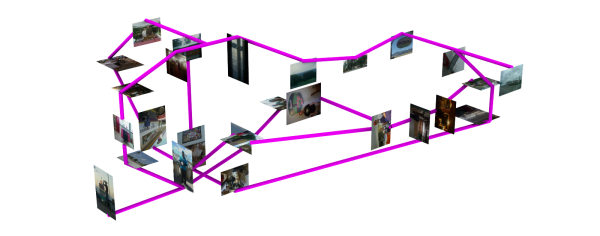
The topic of the AAI exchange in Casablanca is youth empowerment2. The idea of the workshops is to provide conceptual frameworks and technical skillsets that facilitate innovation, entrepreneurship, and engagement. For those participants developing an artistic identity, I hope the workshops can also help with discovering and choosing expressive media; while for more experienced participants, the skills may help bring new research and data-processing techniques into their work.
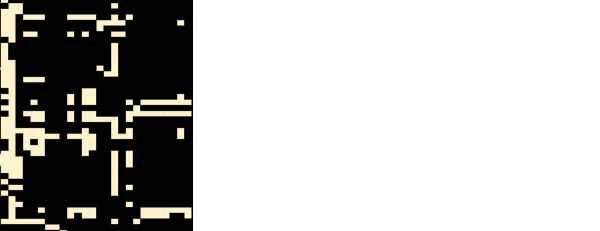
For me, the development of these frameworks started with my family and the childhood experience of immigration. More recently, I have started to dissect (and self-map) the complex paths that experience led me down.
The self-map image starts to get at the following questions:
What can we discover when we start to explore the individual as a vessel of socio-historic confluences through quantitative analysis?How does one identify, question, embrace, and express an awareness of one’s own familial and philosophical lineage(s) in the process of exploring socially-critical topics?Can some of it happen through numbers? Can spreadsheets shed their corporate connotations and become powerful tools for artists? Can some of it happen through the senses? How can we identify and deploy physical experiences in exploring and articulating intellectual challengesWhere is the limit of one type of mapping and what subjective additions to we make to maps when representation breaks down?And how can we unroll an experience to discover and display narratives of cultural relationships?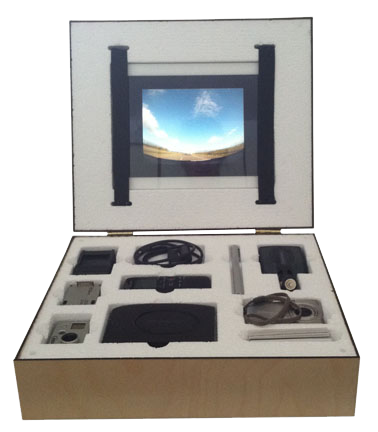
L’Uzine is already involved in exploring its urban context. In particular, the Aïn Sebaâ exhibit investigated its neighborhood. I hope that this exchange will offer a way to supplement the great work under way and to develop some novel approaches to understanding self and space.
Wait — did I already say how excited I am to see what backgrounds, interests, and media workshop participants bring into the fold? What implications might rhetorical construction, collection, data visualization, and mapping have for the modes of expression and creation that participants engage in? I look forward to observing and participating as responses to these questions (and more!) coalesce and dissolve in the experimental framework of the “Rhetorical City” workshops at L’Uzine!

2. According to World Bank’s “Kingdom of Morocco Promoting Youth Opportunities and Participation” (June 2012), the landscape of employment in Morocco has undergone radical shifts in this century.
A large part of my arts practice is informed and shaped by the environments, spaces, and communities I’ve lived in and travelled through, including my native island of Oah’u in Hawai’i. I’ve always been inspired to create meaningful spaces for cultural dialogue, and work collaboratively with communities to create impactful projects, which I have strived to do as the Artistic Director of B4BEL4B Gallery in Oakland for the past four years.
In my personal arts practice I have used 3D modeling, augmented reality, websites, and textile design to tell stories that speculate on how we can reimagine the past, present and future. I’m interested in our relationships to our technologies and how they both come from and shape the environment, and focus on these stories in my work.
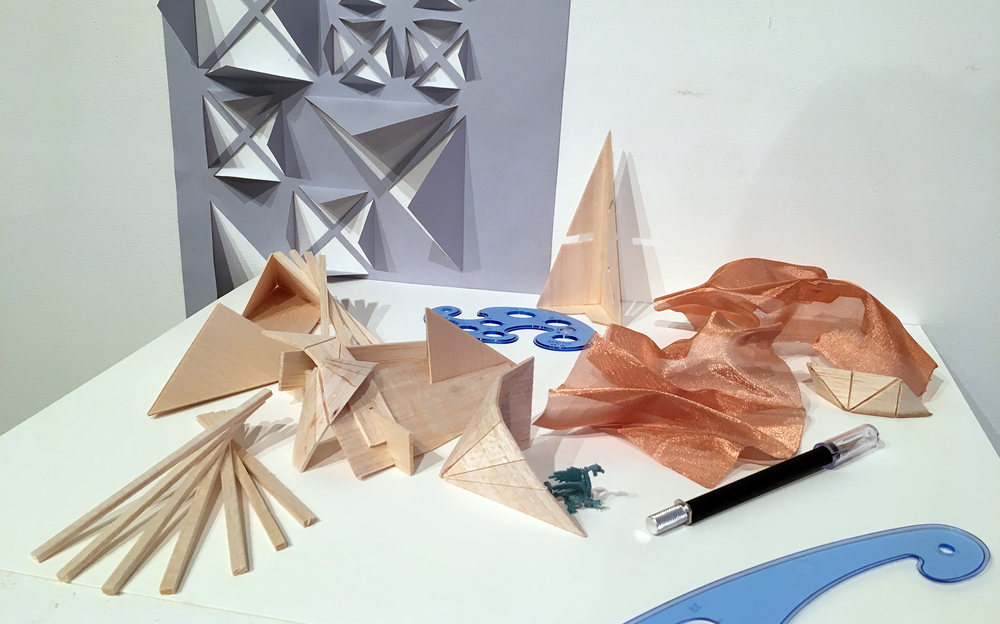
I’m excited for my arts practice to evolve next month as I travel to Kyiv, Ukraine, and lead workshops and community projects in partnership with IZOLYATSIA, a dynamic arts organization focused on cultural and social change. I have been inspired by the youth-driven “Made in Ukraine” movement where Kyivians have revitalized and cultivated a strong and unique identity. Through conversations I’ve had, Ukrainian culture and identity is a multi-layered and complex topic that shifts between generations and is interwoven with the political and geographical landscape and the ecology of the land.
Focusing on cultural identity and environment, I will be giving workshops where participants will consider how to use speculative thinking and designing towards prototyping cultural spaces and objects for the present and future. We’ll consider material ecology, design fiction and storytelling through exercises where we think about redefining boundaries, radically refiguring space, transforming damaged landscapes, collaborating with the environment, and how culture and ecology are inextricably intertwined. We’ll also use digital tools to express individual cultural and personal identities.
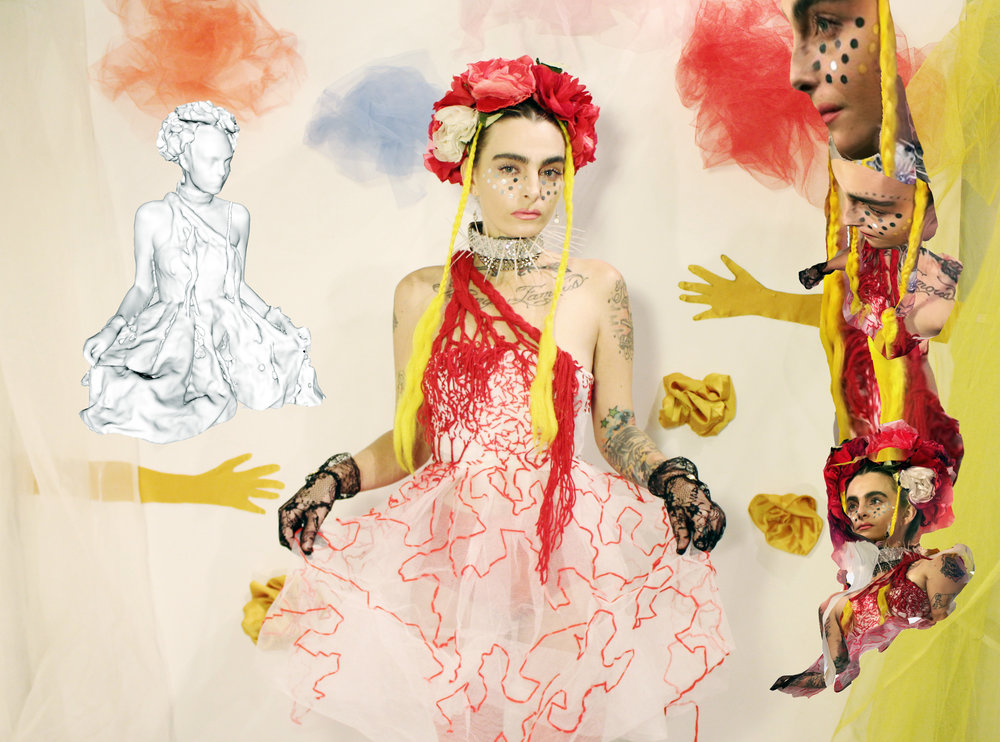
As this will be my first time teaching workshops in another country, I am looking forward to being both a student and teacher while I am there! I hope to provoke conversations and inspire people to create work that is meaningful to them that they will continue to build upon after my exchange.
Teaching is no less a work of art than the creation of artwork itself. For the past ten years my artwork has evolved into platforms and objects that aspire to give people a place to find their voice, express their individual and collective beauty, and learn more about the empowering effects of creativity. I have done this through projects such as collaborative textile-making processes, creating and running a neighborhood Super 8 film festival, and designing radio sculptures for non-traditional communication. Recently, I have been fusing my two primary interests, textile objects and traditions plus communication practices to express ideas of voice, identity, and place.
I am extremely grateful to be able to bring my art practice to Kochi, India and continue exploring communication and empowerment through a partnership with the Kochi Biennale Foundation, addressing the topic of gender equality. Inspired by Gandhi’s khadi (Indian hand-woven cloth) campaign, which “was a result of decades of experimentation with cloth as a means for communication,”[1] I am preparing for a project to embed speakers into textiles exploring micro-amplification to amplify stories from the Kerala region.
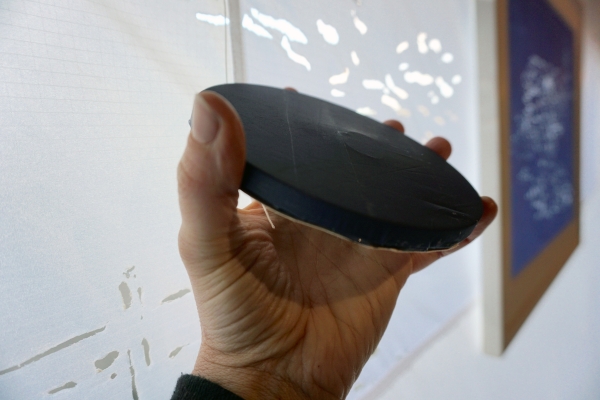
The workshop I am offering will explore amplification, sculpture and sound (including e-textiles), narrowcasting, and podcasting as a method for exploring gender equality, communication, and creativity. Inspiration for this project has come from India’s rising access to radio through mobile phones[2] and Vinod Pavarala and Kanchan K. Malik’s Other Voices: The Struggle for Community Radio in India, which credits radio with the “capacity to consolidate participatory communication into a thread that weaves through the development process and endows it with avenues to strengthen and give voice to all stakeholders.”[3]
I begin this exciting journey in mid-February and look forward to sharing my experiences there.
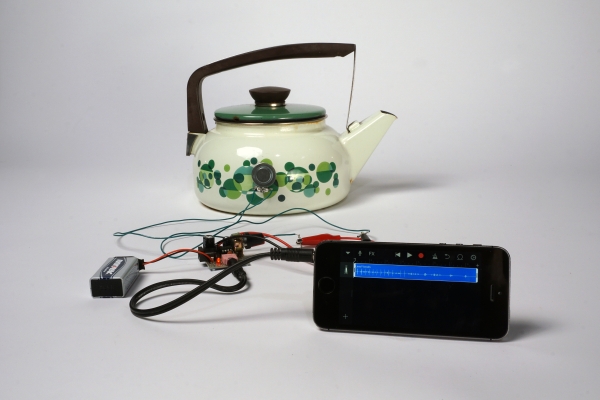
Workshop tutorials will include building speakers and amplifiers, making things “talk” through the use of transducers, audio editing and amplification, and hacking electronics to make what you want. Photo by Laura Wright.
[1] Gordon, Beverly. Textiles: the whole story: uses, meanings, significance. Thames & Hudson, 2014. pg. 104
[3] Pavarala, Vinod, and Kanchan K. Malik, Other Voices: the struggle for community radio in India. Sage Publications, 2007. pg. 182.
We received updates from the American Arts Incubator participants in Thailand! Here's what they've been up to since the exchange wrapped up in July (submissions have been edited for length and clarity).
Make It Clear
We believe that water resources and the community nearby are deeply connected and affected by one another. Therefore we are designing an activity project with the khlong Ladprao community called the "Ice Breaking Board Game." It is a new media board game which interacts with body movements and sounds. This is ideal for building better understanding about water resources within the community and making a better relationship among them. We tried our best to apply our artistic knowledge to bring concrete benefits to society.
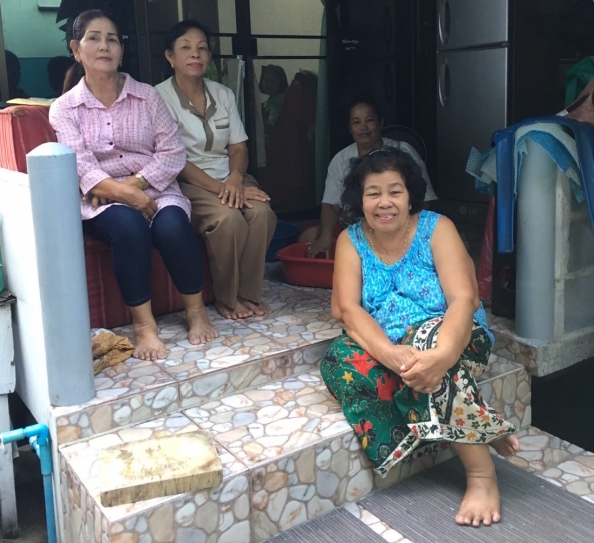
Expected results for the community:
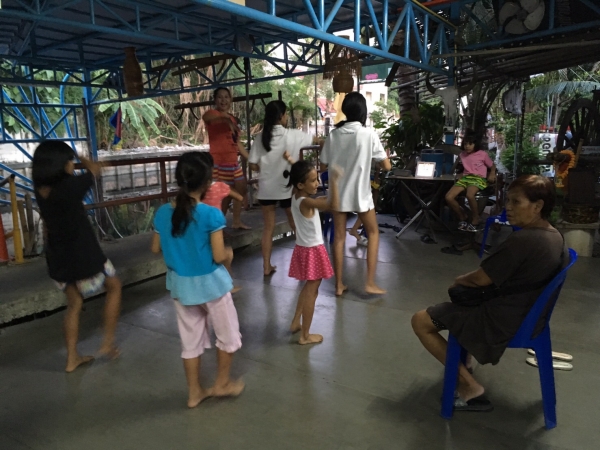
River Voices
Our group met a new possible collaborator, Valerie, at the Bangkok Art and Culture Center in July. She was a museum art director in the USA and had recently joined the Peace Corps. Her project goal is to send Americans to help other countries.
She is currently helping a school in Thailand as an English teacher. Her school is called the Wat Thammajariya school, which currently has 290 students. Her goal is to do art in her school for her students. Since we are looking for a place to make community art about the river, we think it would be perfect for us to visit her school.
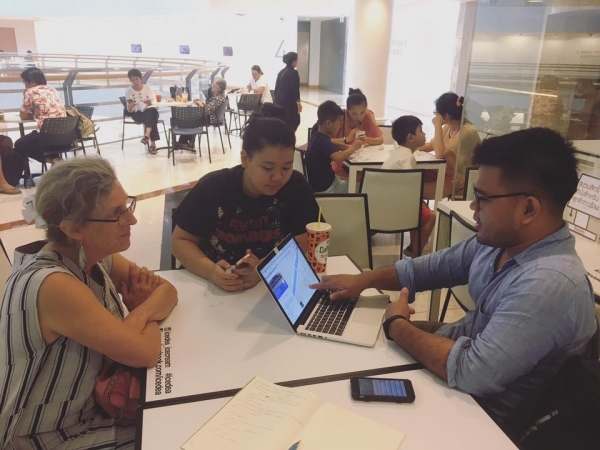
We went to her school and had a meeting with the principal and teachers. They came up with the idea of having secondary school students M.1 - M.3 (12- to 15-year-olds) do the activity, which they can then later organize for younger students in the school. We would have three camps with 30 students at a time, and students would rotate around.
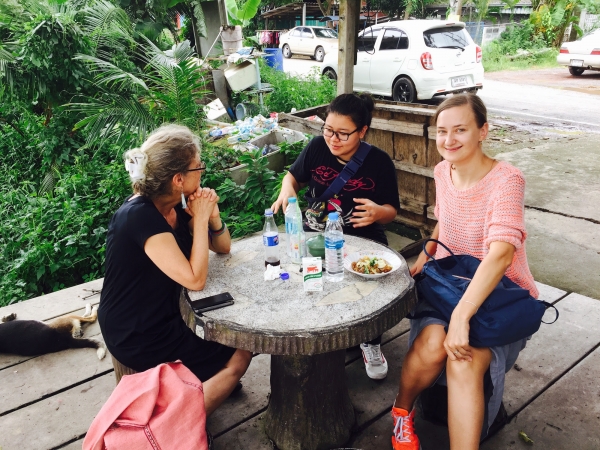
These are the camp ideas:
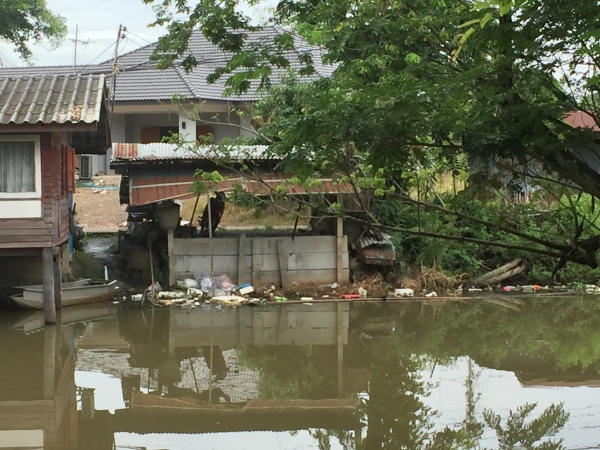
We also visited the canal, and it's quite clean compared to Ladprao community's. There is some trash floating but only in one area. Their community has a trash bank program where people in the community sort the waste and sell them, but it just has started.
The Cleansing of a Canal
We did a workshop with the community in August. Many youngsters and a few adults joined us. The workshop was developed to uncover participants' ideas of what kind of community art project they would like to make. Our aim is that this project would be beneficial to the community in their eyes, not from an outsider's perspective. In the workshop, we guided the participants to dig deep into the urgent needs of their community and revealed what their skillsets are, what skills they want to obtain, and what they're interested in.
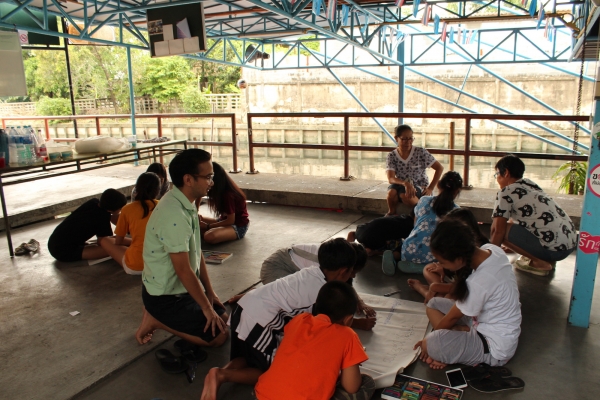
We found out that they would like to have more source of income, tutors for children, and ease the general sadness from the fact that some of the community members will not be able to live there in the future. They are interested in technology and social media. They enjoy drawing, gardening, and many types of sports.
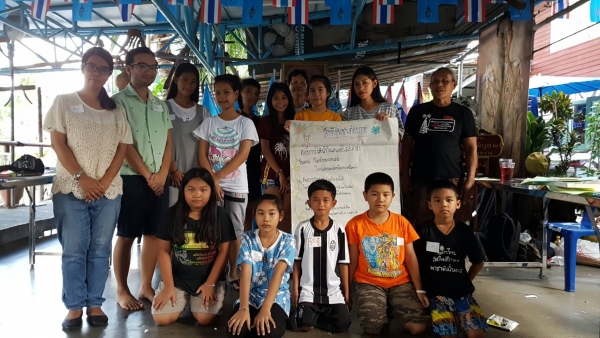
In our next workshop in September, we will guide them to combine these elements into an art project that truly reflects their own community.
It’s hard to for me to believe that it’s been a month since the exchange has ended. The time was intense, rewarding, and the effects of the experience difficult to describe — but I’ll do my best.
I’ve never done anything quite like this: worked for a month in a foreign country where I’ve taught a workshop, facilitated projects, and worked on my own new project. It was a lot in a short, 28-day period.
Bangkok is intense and wonderful at the same time. It is the most urban of urban places that I’ve ever lived in, with very little green space. Cars, motorbikes, people, street vendors, and shopping malls were everywhere. Yet despite the craziness, I felt a warm hug of the humidity everywhere I went. Thai culture is relaxed compared to what you’d find in the United States, so bumping into and around people doesn’t create anxiety and tension as you’d find in other places. I was happy there.
The next step is for me to talk about the experience publicly. Just a few days ago, I presented my Sonaqua project at Dorkbot SF and spoke about the American Arts Incubator Program.

We also have the three projects that were given sustainability grants. One of the projects, River Voices, will go on to have a series of community engagement workshops. In this case, the word “community” means a slightly different thing in Bangkok, where “communities” are more cohesive political entities and are usually situated in low-income areas, often isolated from the rest of the metropolis.
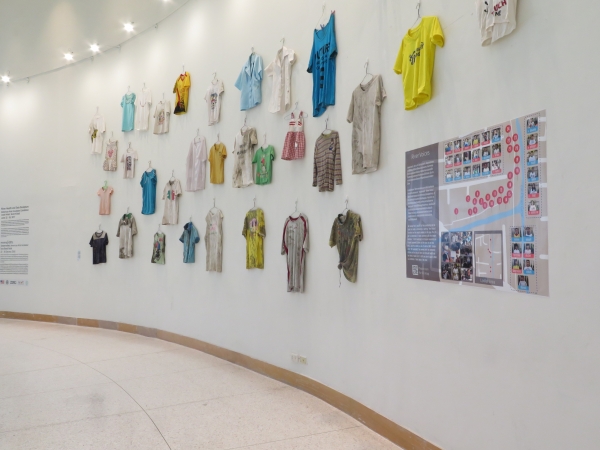
Finally, I will further develop my Sonaqua project, where I sonify water quality. This project will travel to Santa Fe in September. Bangkok was the first step for my work.
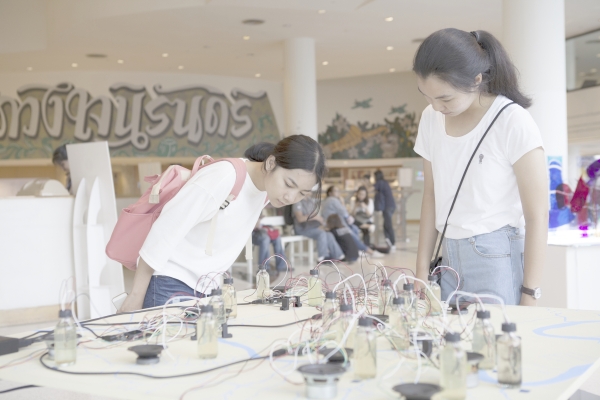
I do hope to come back in the future to do work in Thailand. It holds a special place in my heart. I hardly did anything touristy and instead spent time almost exclusively with Thai folks. I absorbed a much deeper cultural understanding than just about any tourist will get. My fantastic production assistant, Ekarat, was my guide throughout. He would frequently joke about things being done “Thai style,” which could be interpreted a number of ways. Often it meant that matters looked disorganized but always came together magically at the end.
After a short vacation outside of Thailand, I came back to gather my belongings and fly back home. I ended up having a farewell dinner with a few of the workshop participants as well as Ekarat. Here we are eating food on the banks of the Chao Phraya river and drinking Thai beer in the midst of a hard rainstorm that alleviated the humidity for just a few hours. I will miss the friends I made during this special time.
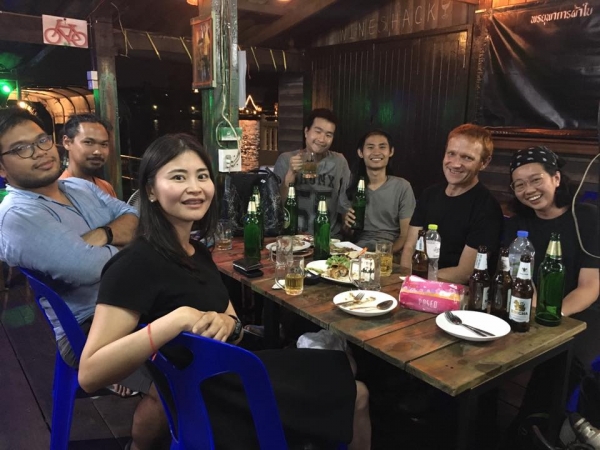
My time in Medellín, Colombia has been transformative to say the least. The people, art, communities, music, and dance — all surrounded by sweeping landscapes of green coalesced to create the vibrance that is Medellín. And in between the empty spaces of this city is where the heart fills first. This emptiness is where new ideas come to fruition. A space is born to breathe and take pause for a moment in silent contemplation; these are the spaces between the notes, where the music is formed. In Medellín, you find a rampant city of exuberance, noise, and commotion right beside the raw-natural beauty of the flora and fauna of a serene landscape.
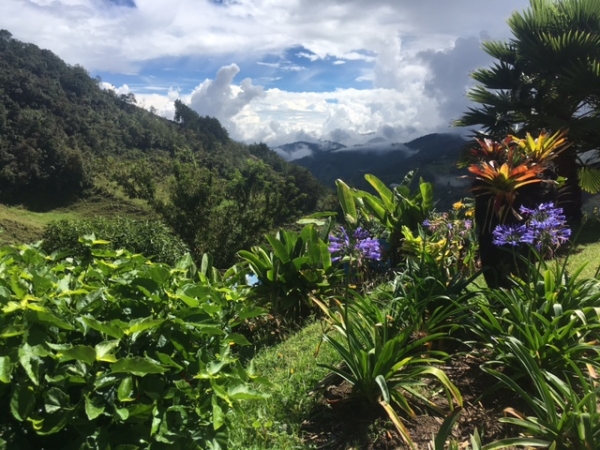
Our goal with the American Arts Incubator program was never to solve any issues, but rather to address difficult topics through digital arts and to bring about awareness. The topic for Colombia was admittedly a difficult one to address: peace and social inclusion. How do we as individuals address this in our day-to-day lives? How do we create inclusive spaces and communities? This main investigative question is still very much active and in debate (as it should be).
There were hardships, growing pains, and even conflicts within our own groups while discussing this heavy topic, but this was key to the very idea of inclusion itself. We sought different angles of engagement and created the necessary dialogue. This was where the work of many individuals combined to create one inclusive view — a view that included different ideals presented within a single framework. With these unique perspectives combined as a whole, we could begin to highlight the diversity of a culture striving towards peaceful and inclusive community interactions.
For me personally, I learned perhaps the greatest lesson of all, and no less than through my own words that I preached over and over — that of listening. In the beginning I failed to do so with my whole heart. I realized at an important turning point in my exchange that the process of using an interpreter had led to my own disregard of the country's language.
The majority of workshop participants did not speak English, but gradually each one of them began to try. They spoke whatever English they knew in order to include me. This was when I began to see the true humility of the Colombian people. Though many of them were not fluent or even confident in their words, they tried for my sake and from their desire to spread compassion and inclusion. This act made my heart grow heavy. Through translation, I was missing out not only on the meaning of the words, but the very sounds of their voices, speech patterns, and subtle inflections. By relying on my interpreter, I had trained my ears to tune out the Spanish language just as one would tune out the drone of an air-conditioner or the hum of a fan. Their voices became white noise and I was no longer actively listening.
This realization hit me with a force so strong that it sent my heart to the floor, so I began to ask my new friends to speak to me in Spanish. I asked questions en español, and for the first time I fully engaged myself in the process of learning the language. I figured if they were brave enough to try with me, that I should at least return the gesture. As soon as I began to try, an entire world opened up to me. A new bond was formed and I can say with full confidence that we all became closer friends.
In the following days I awoke with Spanish vocabulary on my mind. I engaged and participated in ways not previously explored which created an exciting feeling that stormed my bodily presence with an epiphany of pure love. And this love was something that I had been disconnected from at the beginning of my exchange. The simple act of listening and letting go of my own inhibitions created a new awareness within myself.
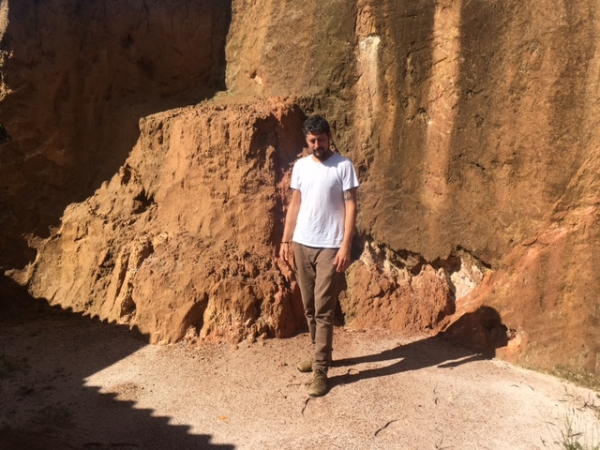
This exchange has been one of the most profound experiences for me, and I owe it all to the amazing people that showed me the way to social inclusion. Through their welcoming and accommodating ways, the Colombian people have given me the most valuable lesson of all, and I thank them dearly for their compassion.
I don’t know what comes next in the coming months or years beyond, but I do know that some very valuable relationships were formed and I can say with certainty that it changed at least one person's perception of what social inclusion can mean.
We had our exhibition last week at the Bangkok Art & Culture Center (BACC) and it was a huge success.
I made just two rules for the artworks:
Every exhibition is full of surprises and this one was no exception. Several days before the exhibition, we found out that we had about four times as much floor space and walls available than we had expected. Whoa.
Fortunately, three out of the four groups had works they were planning that would take advantage of the curved walls of BACC. I have no idea what we would have done otherwise.
The exhibition site at BACC was not part of their formal exhibition space. We would set up on the fifth floor, which displays work but is also a public thoroughfare, so our challenge was viewer engagement.
The dirty t-shirts were the most striking thing you saw from a distance. What were these? Hopefully people would get drawn in by their curiosity.
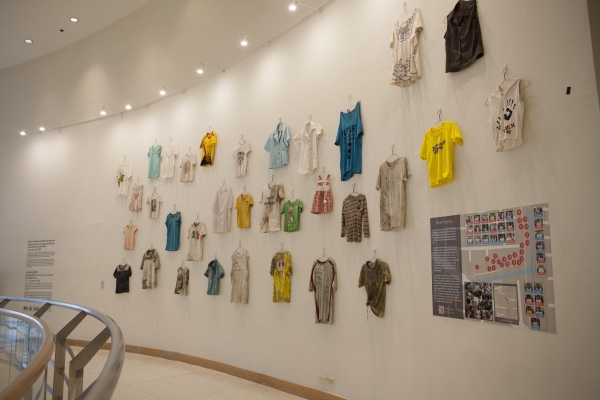
A good exhibition means that people have different levels of engagement.
Some spent a good amount of time with The River Voices — the hanging shirts (above), which were part of a t-shirt exchange with the Ladprao community.
Others were very much interested in the abstract group sculpture on pH, electrical conductivity, and dissolved oxygen: Reflection.
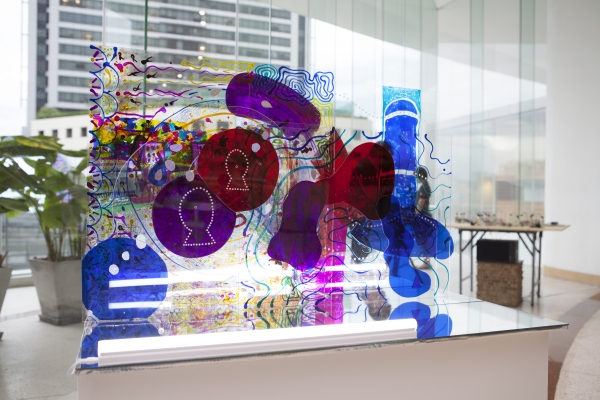
The Cleansing of a Canal
was a storytelling piece that grabbed exhibition-goers who were intrigued by media and direct interpretation of the river/khlong experience.
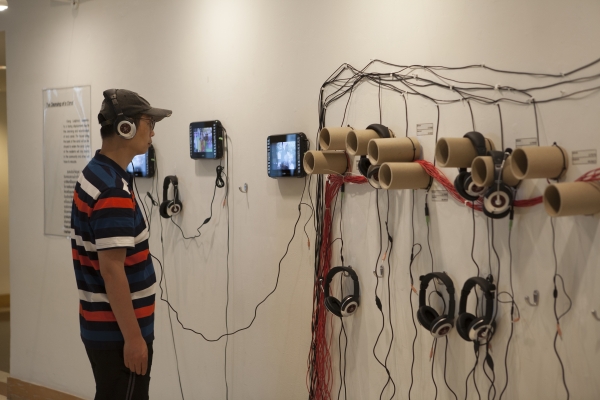
And Make it Clear was an interactive painting that used thermo-reactive paint and mapping of pipe data. This piece was a solid, fun interpretation of the term “interactive.”
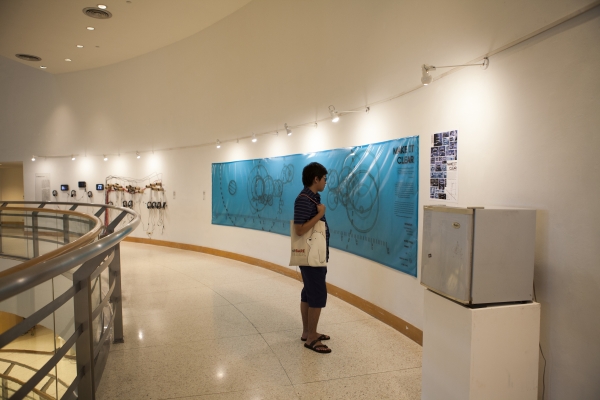
Part of the Incubator included making my own work, Sonaqua — a sonification of water quality. This too felt overwhelming, but fortunately the four teams were doing quite well on their own during their production period, so it let me investigate my own work.
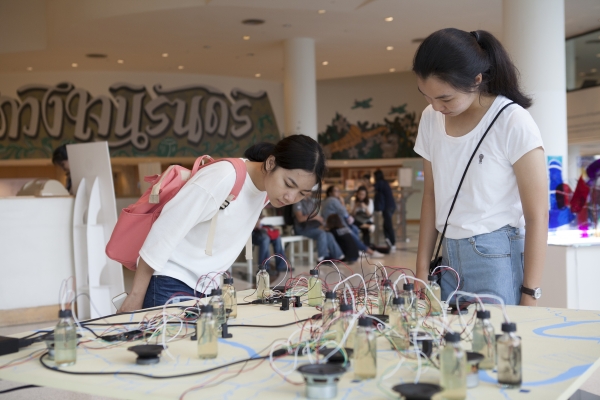
We also got full engagement from the Ladprao community, which is one of the communities that the embassy put us in touch with. They are actively cleaning up the khlong in their neighborhood, and in the process, relocating many of their community members.
We also got lots of media coverage, which is always an important component. We were spotlighted on both Thai PBS and The Matter.
In the end, I can say one thing for certain. The workshop participants were amazing. We had four teams of five people each and they all cranked out work — some until the last minute, maybe a bit too close for comfort — but I think this is the often the way.
As a representative from the United States, it was inspiring to see that addressing environmental issues is such a high priority among so many people in Cambodia. Leaders young and old are working hard with beautiful creativity to heal our world.
The American Arts Incubator – Cambodia Facebook page continues to be a vibrant hub for workshop participants, environmental activists, and media artists in Cambodia. The four teams are continuing their projects, launching their own social media campaigns, and are well on their way to Phase 2 project production. I am excited to be a long-distance advisor as their projects continue to grow. The 360 Ricoh Theta S camera and virtual reality (VR) goggles purchased for the workshop are being shared in an ongoing equipment pool for the groups. The installed solar electric system for the Bophana Audiovisual Resource Center continues to provide power each day for screens to show artwork and fans to keep everyone cool. It is inspiring to know that when the sun is setting here in Philadelphia, it is rising over the solar panel in Phnom Penh.
I feel honored to have led the Incubator at Bophana Center in Cambodia and thankful for all the support and enthusiasm of the Bophana Center staff. I was most impressed by the dedication and commitment of the participants. The teams worked really well together considering the strain of creative deadlines. Fortunately, there were no breakdowns or ego battles in the busy final days. A real sense of camaraderie developed among the teams as well as across the whole group. The final exhibition was a tremendous success and groups of visitors continued to come in for the month-long duration of the exhibit.

One of the installations created by the Plastic Team featured a statue of the mythological mermaid, Suvannamaccha, made out of plastic bottles and newspaper headlines. The statue had trigger images of sickly fish and some fruit. When looked at through the augmented reality (AR) app, the fish and fruit disappeared to reveal an image of the mermaid. The installation's purpose was to warn us of a future where ocean life disappears because of trash and other pollutants.
Usually, AR projects are about adding a new layer of information on top of the trigger image. This was a learning moment for me as the participants expanded my horizons to look at the technology differently. Their project conveyed how adding something can have a subtractive effect. Perhaps this approach can provide new and unique solutions to the seemingly futile pursuit of environmental sustainability.
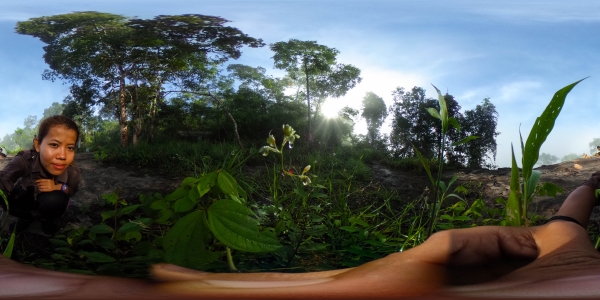
While a couple of workshop participants had experience with virtual reality, none of them had ever experienced an augmented reality project. It was powerful to realize that in Cambodia, their first experiences with AR and VR were as art projects and not simply commercial applications for a corporate product. During the American Arts Incubator workshop, I watched them realize their potential as makers and innovators, not merely as passive consumers. They are now at the forefront of developing the aesthetics of these new mediums.
The one exciting potential of new media technologies is that peoples' use of it has not been trained by a lifetime of cultural influence. Through the workshop, participants were able have a more pure and personally pioneering experience in imagining the potential for AR and VR as tools for art-making and creating social change.
Opening night.
The exhibition at Colombo Americano was a huge success! All of the teams came together to pull off an amazing show. In total, we had four groups who produced seven projects now on display in the gallery. The work ranged from video projection mapping, live performance, photography, sound installations, and community outreach programs.
We had a tremendous review from the crowd, and as you can see from the photos, opening night was packed!
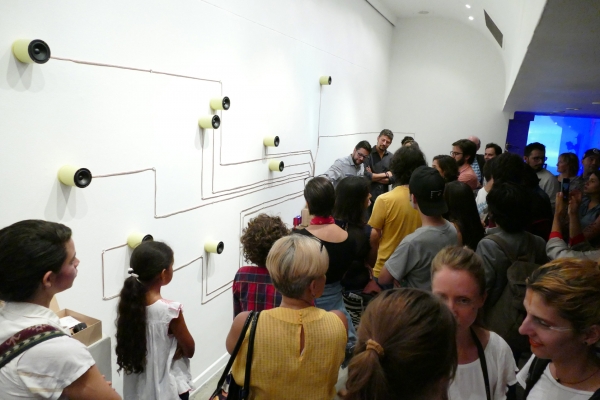
Here you can see the project entitled Escucha, which aims to give voice to all by allowing visitors to record their stories and explain what peace means to them. After the exhibition, these boxes will be passed from person to person and track the path of each individual's story and record sounds of their environment. The escucha box becomes a mobile platform for sharing stories as well as a living time capsule. Please visit www.escucha.org to learn more and contribute to the project.
The project Dame un Minute was based on one of our first workshops where we had participants listen to each other for the duration of one minute. Here you can see the project in action:
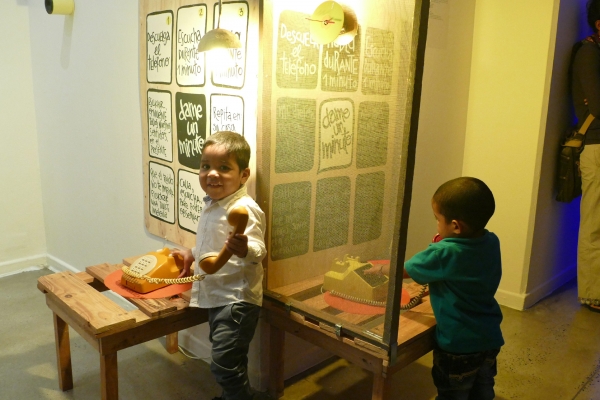
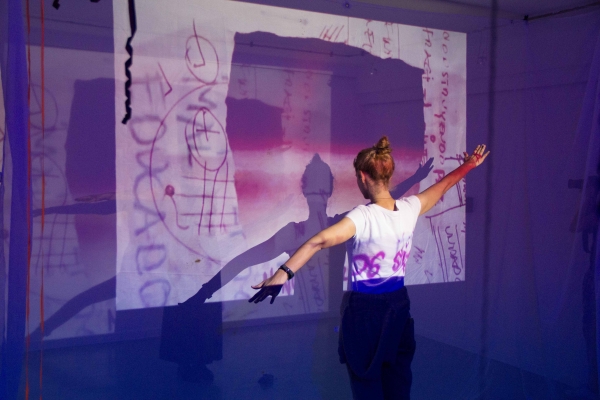
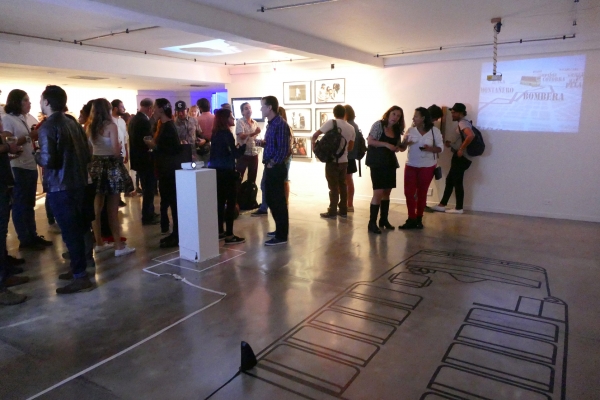
Reloj de Paz
or "clock of peace" is a wooden clock in the typical style of Salvador Dalí. The clock uses hour markings to represent the history of conflict in Colombia from the 1950s until the time peace negotiations started in the country. These milestones are expressed by images and archival sounds around the clock, which eventually enters a time zone for peace with sounds that are generated by the community.